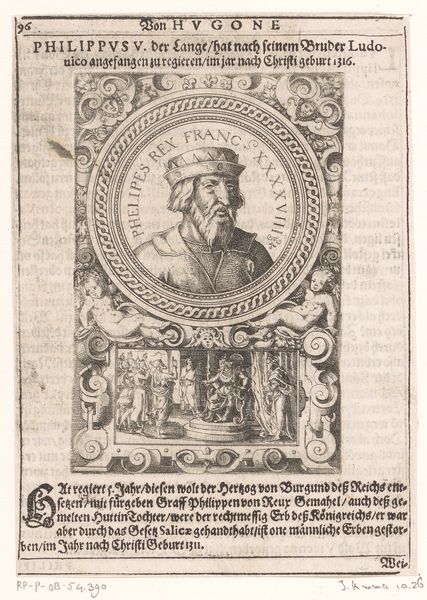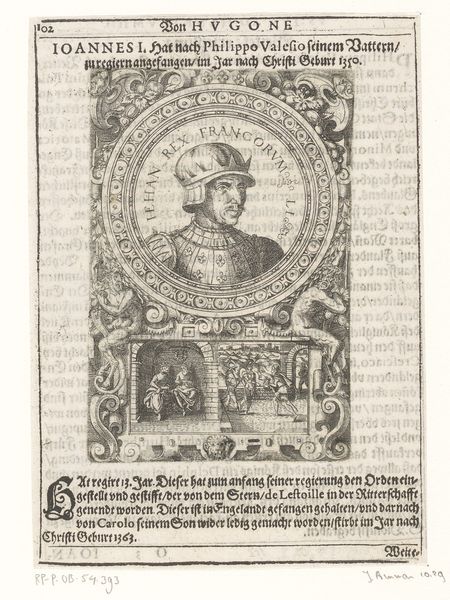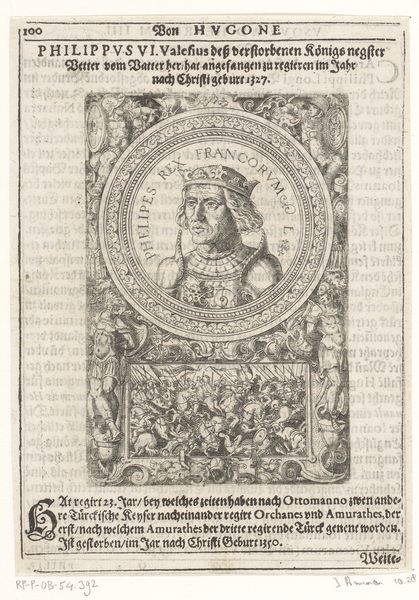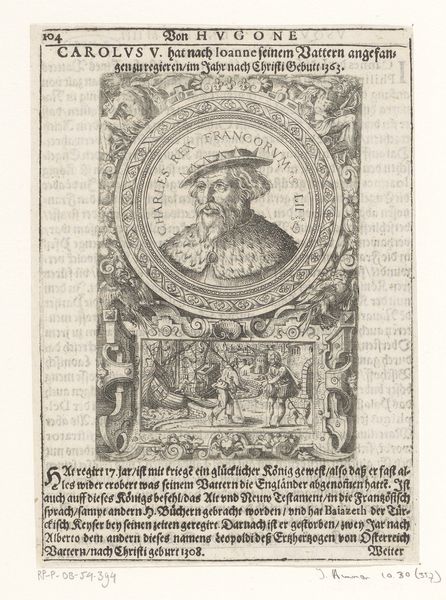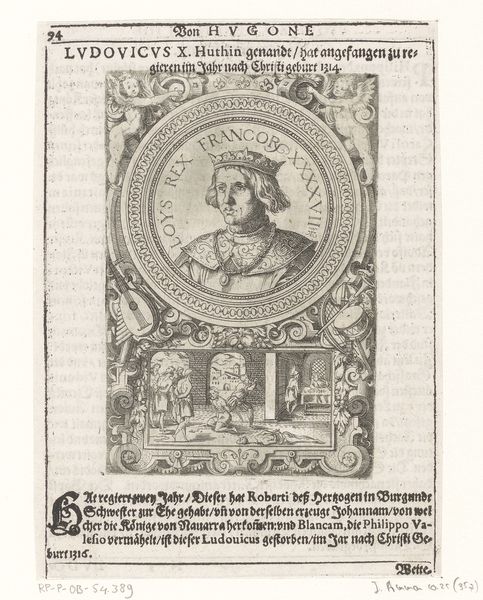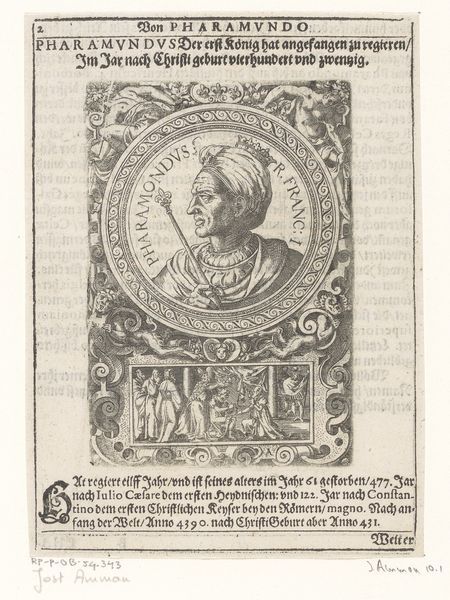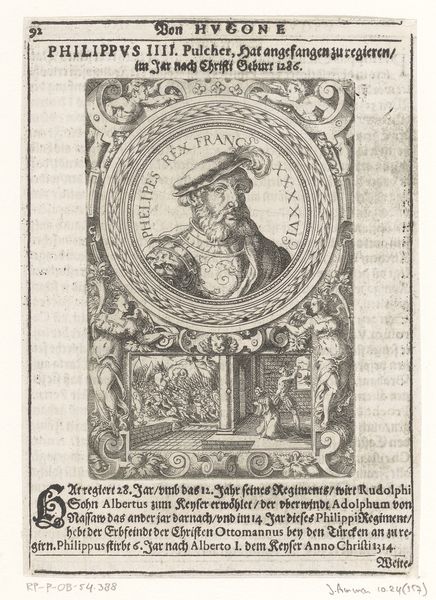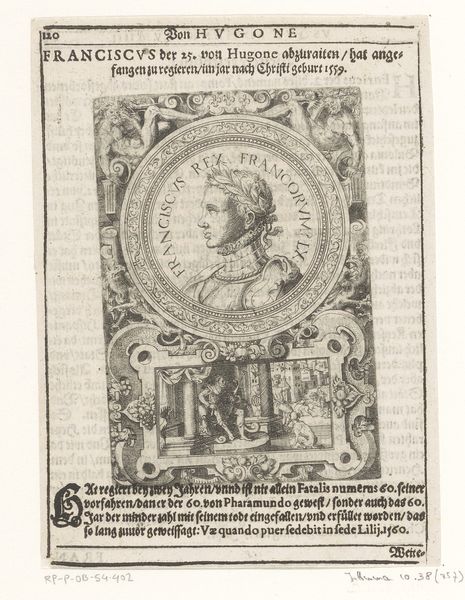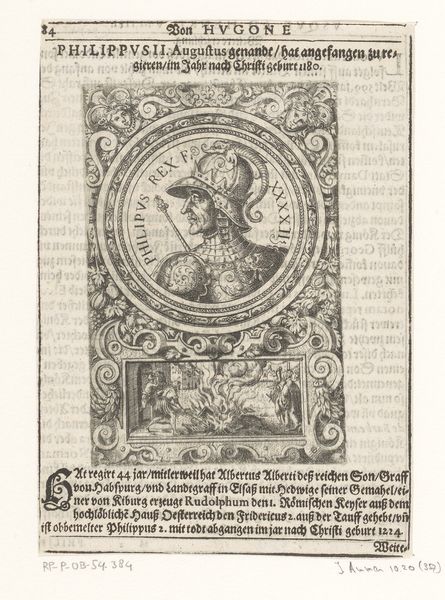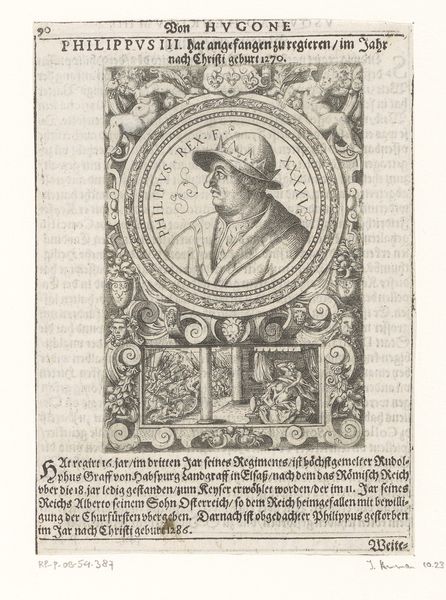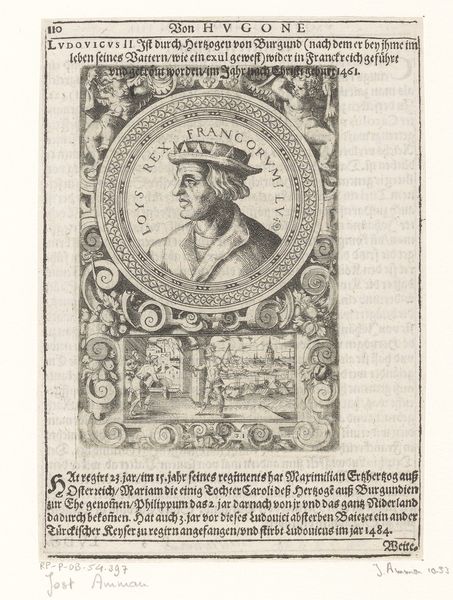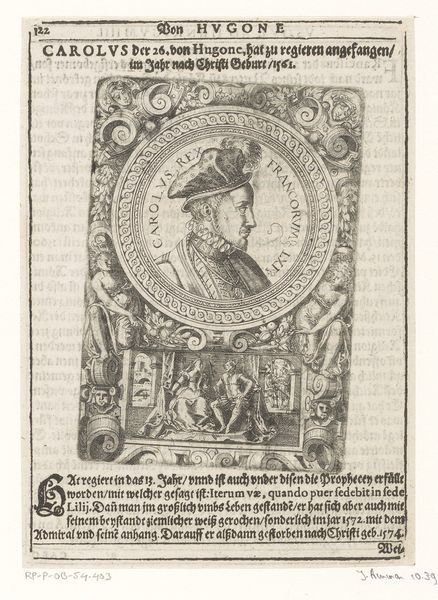
print, engraving
#
portrait
# print
#
history-painting
#
northern-renaissance
#
engraving
Dimensions: height 118 mm, width 79 mm
Copyright: Rijks Museum: Open Domain
This engraving of Louis XII, King of France, was made by Jost Amman. Note the laurel wreath encircling the king's profile, a direct echo of ancient Roman imperial iconography, symbolizing victory and eternal glory. Below, a battle scene unfolds, cannons blazing, soldiers clashing. Such scenes have their roots in triumphal arches and classical friezes, visual testaments to power and military might. This motif recurs throughout art history, each time revitalized to serve new political and social contexts. Think of the Renaissance revival of Roman military imagery, a conscious effort to connect to a glorious past. Consider the psychological weight of these symbols. The laurel wreath isn't just a decoration; it's a claim to legitimacy, tapping into a collective memory of empire and authority. This image doesn’t merely depict Louis XII; it positions him within a lineage of power, a lineage that artists and rulers have manipulated and reinterpreted for centuries, engaging viewers in a complex interplay of conscious recognition and subconscious associations.
Comments
No comments
Be the first to comment and join the conversation on the ultimate creative platform.

